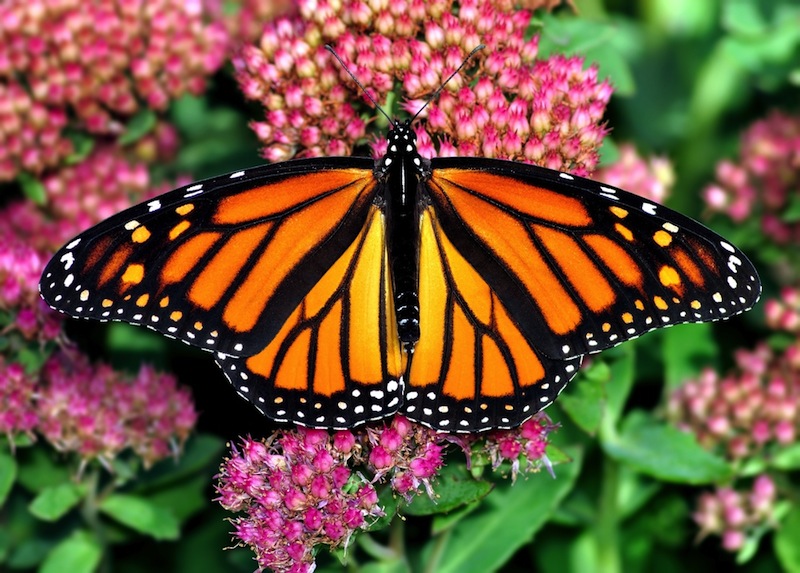Nature's GMOs: Parasites Alter Butterfly Genomes Using Viruses

Genetically modified organisms may usually be thought of as human creations, but scientists now find that monarch butterflies, silkworms, and many other butterflies and moths naturally possess genes from parasitic wasps. These genes were acquired through a virus that weaves in and out of DNA, the researchers found.
Butterflies and moths may have kept these wasp genes because they protect against other viruses, the researchers added.
Parasitic insects known as braconid wasps lay their eggs inside the caterpillars of butterflies and moths. The wasp larvae that hatch from the eggs typically kill the host caterpillars. [Butterfly Gallery: Beautiful Wings Take Flight]
Along with those eggs, these wasps also inject giant viruses, known as bracoviruses, which can incorporate themselves into the genomes of the caterpillars, the researchers said. Bracoviruses invaded wasps about 100 million years ago, and now are created exclusively inside wasp ovaries from viral DNA inside the genomes of the insects, the scientists added.
Bracoviruses help wasp larvae survive within their hosts. Once the bracoviruses weave themselves into the genomes of the caterpillars, the viruses can inhibit the immune defenses of these caterpillars, protecting the wasp larvae.
However, caterpillars might sometimes repel braconid attacks, for instance, by eliminating the eggs or killing the larvae. Caterpillars may have an especially good chance of surviving these braconid assaults if they get attacked by wasps that do not normally parasitize their species. Since they survive such attacks, this means caterpillars with genes modified by bracoviruses could grow up into butterflies or moths and pass these changes on to their offspring.
Now, scientists find that bracoviruses at times brought wasp genes with them. These tag-along genes were found in the monarch butterfly, the silkworm, and pests such as the fall armyworm and the beet armyworm, the scientists said.
Get the world’s most fascinating discoveries delivered straight to your inbox.
"I was so surprised, I couldn't believe it — I thought at the beginning that there was a mistake somewhere," study co-senior author Jean-Michel Drezen, a virologist at the University of Tours in France and research director of France's National Center for Scientific Research, told Live Science. "But we could verify experimentally that it was true."
The wasp, bee and ant lineage diverged from the butterfly and moth lineage about 300 million years ago, about the same time the ancestors of mammals diverged from the ancestors of reptiles. The differences between wasp genes those of butterflies and moths were therefore significant enough for the scientists to distinguish the two.
"Our results show that genetically modified insects are being created by nature without the need of a laboratory," said study co-senior author Salvador Herrero, a molecular biologist and insect pathologist at the University of València in Spain.
The scientists discovered that some of these wasp genes help protect caterpillars against baculoviruses, which are viruses that farmers sometimes use to control insect pests. Specifically, the researchers found that these "domesticated" genes may help keep the viruses from moving around inside the insects.
Previous research has found that viruses can ferry genes between species. Mutations often degrade these sequences of DNA over the course of many generations, but if the genes benefit their hosts, they can survive largely intact for millions of years, as the wasp genes did in butterflies and moths.
Tens of thousands of braconid wasp species exist, and these insects parasitize virtually all butterfly and moth species. This suggests that naturally genetically modified butterflies and moths are commonplace around the world, the researchers said.
One potential implication of these findings is that if people genetically modify insects, those genes could inadvertently make their way into other species. For instance, genes artificially introduced into parasitic wasps that are used to control pests may accidentally get transferred into the genomes of the pests, the researchers said.
"We must be aware of the type of genes that we add, since they could be also transferred to other insects," Herrero told Live Science.
The scientists detailed their findings online yesterday (Sept. 17) in the journal PLOS Genetics.
Follow Live Science @livescience, Facebook & Google+. Original article on Live Science.

